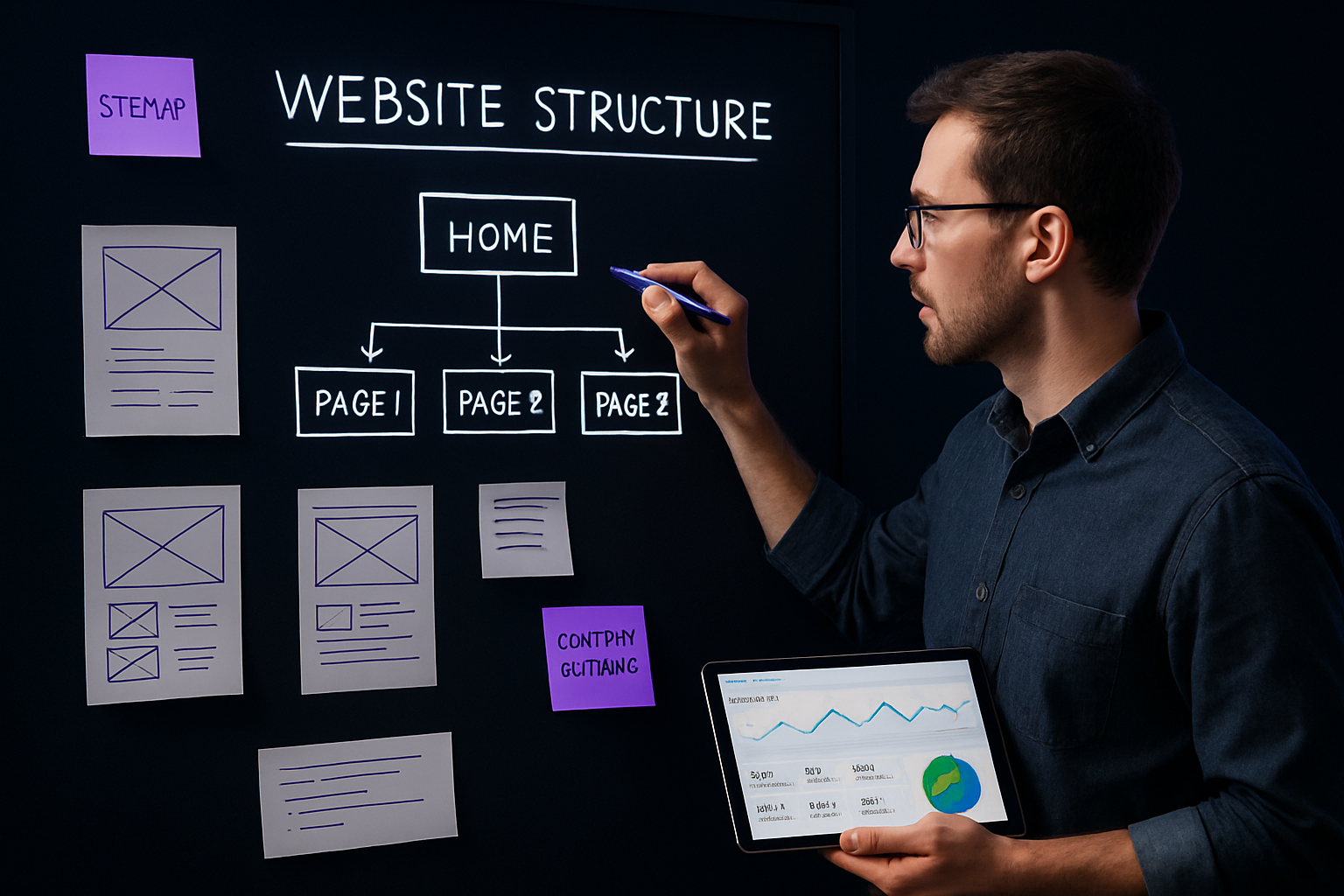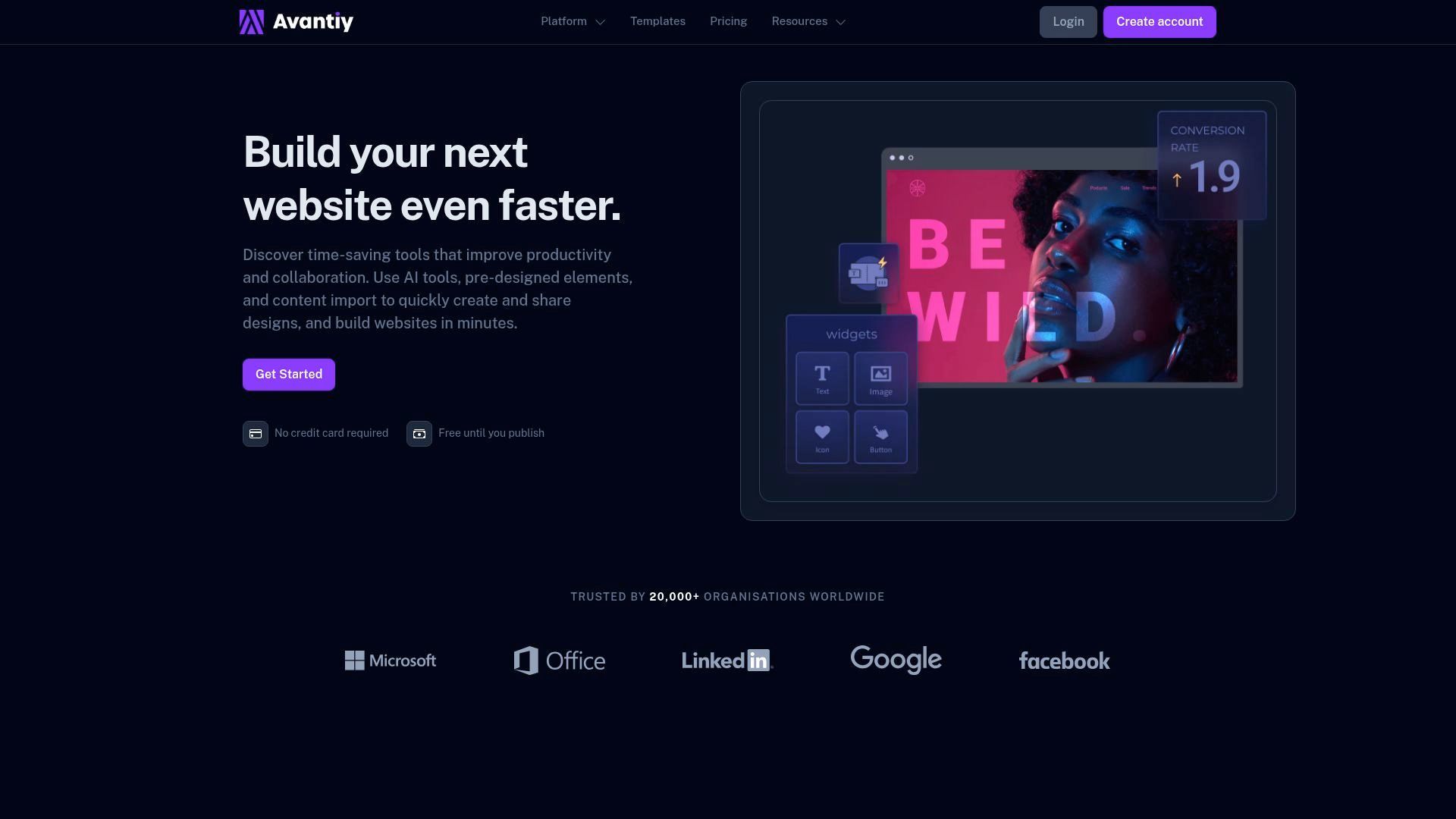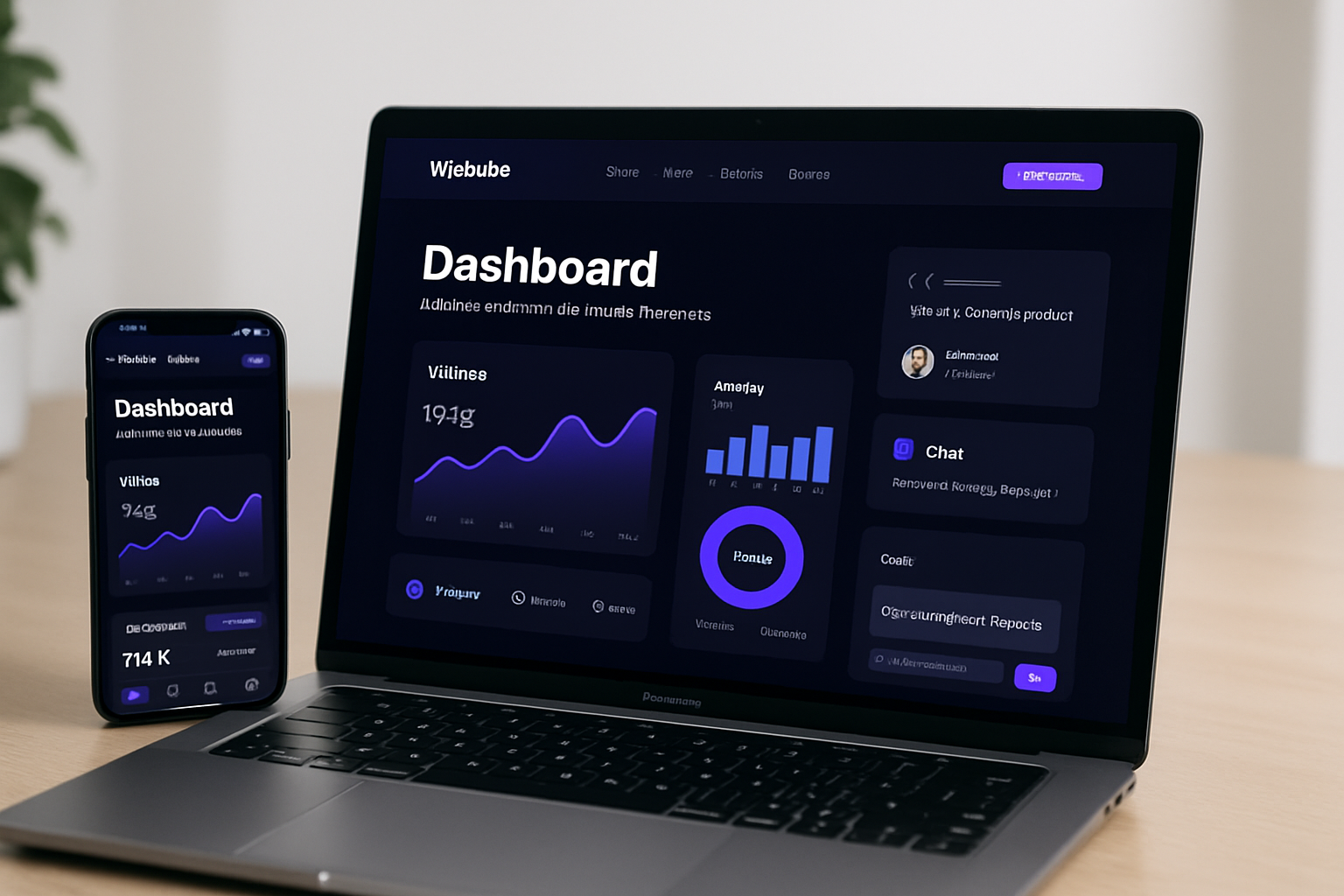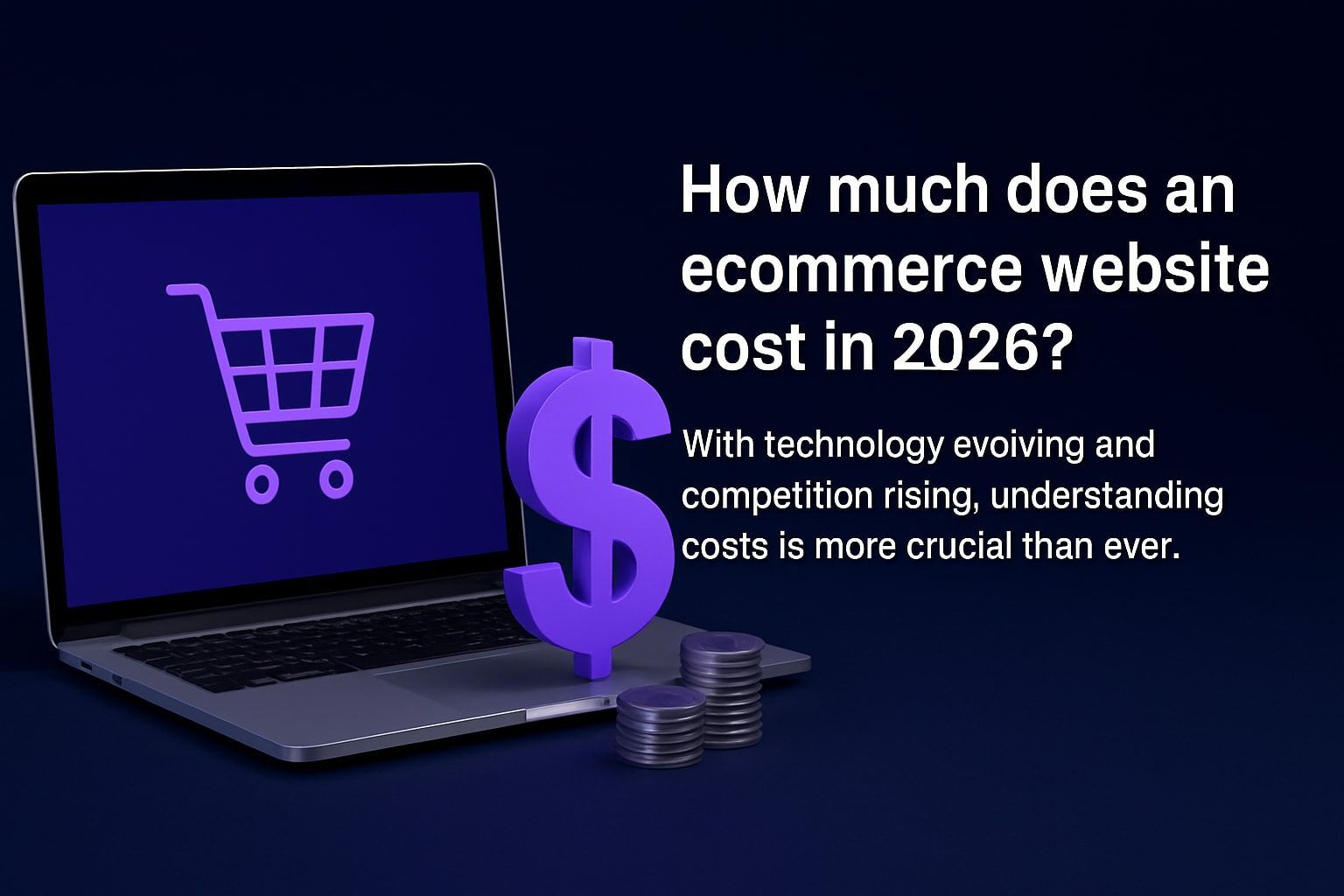The Ultimate Guide to Website Design and Content (2025)
In 2025, having an effective website design and content strategy is essential for anyone aiming to thrive online. The digital landscape is fast-moving, and your website must keep pace with changing trends, user expectations, and search engine demands.
This guide unveils the latest insights and proven steps to help you master website design and content for the upcoming year. You’ll discover how to plan, create, and optimize a site that stands out, engages users, and drives business growth.
Ready to future-proof your online presence? Let’s dive into the roadmap that will turn your website into a true digital powerhouse.
The Foundations of Effective Website Design in 2025
A strong foundation is essential for any website design and content strategy in 2025. As digital standards evolve, your site must keep pace with cutting-edge visuals, flawless usability, and robust security. Let’s break down the pillars that define a modern, high-performing website.

Evolving Design Trends and User Expectations
In 2025, website design and content are shaped by minimalism, immersive visuals, and micro-interactions. Trends like dark mode, glassmorphism, and bold typography are everywhere, creating both aesthetic appeal and better usability.
According to Web Design Statistics 2025, 78% of users judge a business’s credibility by its website design. This means first impressions count more than ever. Apple.com stands out by using adaptive whitespace and interactive elements, setting the standard for user trust and engagement.
- Minimalist layouts for clarity
- Immersive visuals for deeper engagement
- Micro-interactions for delightful feedback
Staying ahead of these trends ensures your website feels fresh and credible.
Mobile-First and Responsive Design
With over 65% of web traffic now coming from mobile devices, website design and content must prioritize mobile-first principles. Responsive design uses fluid grids, flexible images, and well-defined breakpoints to ensure your site looks stunning on any screen.
Google’s mobile-first indexing means your mobile experience directly impacts SEO. For example, Shopify’s mobile-optimized storefronts lead to higher conversions and happier customers.
- Fluid layouts for different devices
- Scalable images without distortion
- Breakpoints for seamless transitions
Prioritizing mobile usability keeps visitors engaged and improves your site’s visibility.
Accessibility and Inclusive Design
Accessibility is a non-negotiable part of website design and content in 2025. Sites must comply with WCAG 2.2 standards, addressing legal and ethical responsibilities. Designing for screen readers, strong color contrast, and keyboard navigation opens your site to all users.
The benefits are clear: improved reach and lower bounce rates. The BBC’s accessible navigation system is a leading example, making information easy to find for everyone.
- Text alternatives for images
- Logical tab order for navigation
- Sufficient color contrast
Inclusive design not only broadens your audience but also demonstrates social responsibility.
Performance, Speed, and Core Web Vitals
Performance is at the heart of effective website design and content. Google’s Core Web Vitals—LCP, FID, and CLS—measure speed, interactivity, and visual stability. A one-second delay can mean a 7% drop in conversions, according to Akamai.
Practical tips include:
- Optimize images for fast loading
- Use lazy loading for off-screen content
- Minify code to reduce file sizes
Amazon’s revenue loss from slowdowns shows the business impact of slow sites. Prioritizing speed boosts both SEO and user satisfaction.
Security and Trust Signals
Security is fundamental in website design and content. SSL certificates, clear privacy policies, and trust badges build user confidence. Secure hosting and regular updates protect your site from threats.
Data from GlobalWebIndex shows 85% of users avoid unsecured websites. eCommerce sites with visible trust signals see more completed checkouts, proving the value of transparency.
- Display SSL and trust badges
- Keep software and plugins updated
- Highlight privacy practices
Building trust is essential for long-term growth and user loyalty.
Strategic Planning: Mapping Out Website Structure and Content
Strategic planning is the backbone of effective website design and content. Without a clear roadmap, even the most visually stunning sites can fall short of business goals. By mapping out your structure and content, you ensure every page serves a purpose and every visitor finds what they need.

Defining Goals and Target Audience
Every successful website design and content project begins by clarifying your objectives and identifying your ideal users. Are you focused on lead generation, brand awareness, or e-commerce sales? Aligning business goals with site objectives ensures your content and features resonate with visitors.
Conduct audience research by creating personas, mapping user journeys, and identifying pain points. For example, a SaaS platform may design unique landing pages for SMBs versus enterprise clients, tailoring messaging and visuals accordingly.
- Set measurable goals (e.g., increase sign-ups by 20%)
- Develop detailed user personas
- Map out key user journeys
This strategic alignment is the foundation for all future website design and content decisions.
Site Architecture and Navigation Best Practices
A logical site structure and intuitive navigation are essential for both user experience and SEO. Decide between a flat structure (few clicks to content) or a deep hierarchy (more categories and subpages), based on your audience’s needs.
Implement clear navigation menus, contextual breadcrumbs, and robust internal linking. According to Crazy Egg, sites with intuitive navigation see 30% longer session times, proving the value of thoughtful planning.
| Structure Type | Best For | Example |
|---|---|---|
| Flat | Small websites | Portfolios |
| Deep | Large, content-rich | Large, content-rich Wikipedia |
By focusing on website design and content architecture, you help visitors find information efficiently and encourage them to explore further.
Content Planning and Information Hierarchy
Effective website design and content rely on a well-organized content plan. Start with sitemaps and wireframes to visualize page relationships and flow. Outline your highest-impact pages—like Home, About, Services, Blog, and Contact—and prioritize them in your navigation.
News sites often use card-based layouts to highlight top stories, making it easy for users to scan and select content. Use clear headings, concise summaries, and calls to action to guide attention.
- Create a sitemap for content planning
- Develop wireframes for layout clarity
- Prioritize key pages in your hierarchy
A structured approach ensures your website design and content support both user needs and business goals.
Integrating SEO from the Start
SEO must be woven into your website design and content from day one. Begin with keyword research, mapping search intent, and analyzing competitors. Optimize on-page elements like titles, meta descriptions, and header tags for every page.
Moz’s site structure, for instance, is built around topic clusters, strengthening both SEO and user experience. For a deeper dive on integrating optimization, explore this SEO tools and optimization guide to align your strategy with best practices.
By prioritizing SEO in your website design and content, you boost visibility, attract organic traffic, and set your site up for long-term growth.
Incorporating Conversion Paths and CTAs
Every element of your website design and content should guide visitors toward a clear goal—whether it’s signing up, making a purchase, or contacting your team. Map user flows that naturally lead to conversion points.
Design prominent calls to action (CTAs) and place them strategically. SaaS sites often use sticky CTAs or personalized offers to capture attention at the right moment. Test different CTA designs and placements to find what works best for your audience.
- Map user flows for each target action
- Use sticky or dynamic CTAs for engagement
- Personalize offers based on user behavior
By integrating conversion paths into your website design and content, you transform passive visitors into active customers.
Creating High-Impact Website Content for 2025
A high-performing website in 2025 is powered by compelling website design and content that resonates with visitors and drives results. Your content strategy needs to be as intentional as your visuals, blending storytelling, authority, interactivity, and personalization. Let’s break down the essential elements that make your website design and content stand out in the year ahead.
Crafting Compelling Homepage and Landing Page Copy
First impressions are everything. Your homepage and landing pages should instantly communicate your value, using strong headlines and concise hero statements. Effective website design and content guide the visitor’s eye, blending persuasive copy with visual elements that build trust.
In 2025, storytelling is more important than ever. Brands like Airbnb use narratives and testimonials to connect with users emotionally. Include trust badges, customer quotes, and clear calls to action to reinforce credibility.
Consider these copy essentials:
- Clear value proposition
- Emotional storytelling
- Social proof and trust signals
A homepage that balances visuals and messaging will keep visitors engaged and encourage further exploration.
Blogging and Resource Content: Authority Building
Thoughtful blogging is a cornerstone of website design and content. Topic clusters and pillar pages help search engines understand your expertise, while supporting articles answer specific user questions.
Blogs generate 67% more leads than sites without them. HubSpot’s resource hub is a prime example, driving organic traffic with in-depth guides and timely updates.
To build authority:
- Develop comprehensive pillar content
- Interlink related articles
- Use data and case studies for credibility
A consistent blog strategy positions your brand as a trusted resource and boosts SEO performance.
Visual Content: Images, Video, and Interactive Media
Visual storytelling is essential for modern website design and content. Custom graphics, infographics, and explainer videos break up text and make complex ideas accessible.
Interactive content, such as quizzes, calculators, or maps, increases engagement. Canva, for instance, leverages video tutorials to keep users engaged and returning for more.
Key visual content types:
- Infographics for data visualization
- Explainer videos for clarity
- Interactive tools for engagement
Invest in high-quality, original visuals to elevate your brand’s digital presence and retention rates.
Optimizing Content for Voice Search and AI
The rise of voice assistants and AI-driven search means website design and content must be optimized for natural, conversational queries. Over 55% of households now use voice search daily.
Structure your content with concise answers, featured snippets, and question-based headings. Recipe sites, for example, optimize for “how to” queries, increasing their chances of being featured in voice results.
Voice and AI optimization tips:
- Use conversational language
- Incorporate question-based headers
- Structure content for quick answers
Preparing for voice and AI ensures your content remains discoverable and relevant.
Personalization and Dynamic Content
Personalization is now an expectation. AI-driven recommendations and adaptive messaging make website design and content feel uniquely tailored to each visitor. Studies show 80% of users prefer experiences that reflect their interests.
Netflix exemplifies this with a dynamic homepage that adapts based on viewing history. Personalized CTAs and content suggestions boost engagement and conversions.
Personalization strategies:
- Use behavioral data for recommendations
- Adapt messaging to user segments
- Test dynamic offers and CTAs
Delivering tailored experiences increases user loyalty and satisfaction.
Content Accessibility and Localization
Accessible website design and content ensure everyone can engage with your site. This means providing alt text for images, transcripts for videos, and supporting multiple languages.
Localization expands your reach globally. eCommerce brands, for example, localize product descriptions to connect with diverse markets.
Accessibility and localization checklist:
- Alt text for all media
- Multi-language options
- Culturally relevant messaging
Prioritizing accessibility and localization not only broadens your audience but also demonstrates inclusivity.
Utilizing AI Tools for Content Creation and Optimization
AI is reshaping website design and content workflows. AI writing assistants, grammar checkers, and content scoring tools streamline production and ensure SEO alignment. Newsrooms now use AI to generate breaking news updates and optimize articles in real time.
If you want to dive deeper into how automation is changing the field, AI's Impact on Web Design offers insights on how AI tools are revolutionizing content generation and media creation.
Benefits of AI-powered content tools:
- Faster content production
- Data-driven optimization
- Enhanced quality and consistency
Leveraging AI frees up your creative team to focus on strategy and big-picture storytelling.
How AI-Powered Website Builders Like Avantiy Streamline Design and Content Creation
AI-powered platforms are transforming the way businesses approach website design and content. Tools like Avantiy offer drag-and-drop design, template customization, and instant content generation—all in a single platform.

With built-in SEO, accessibility, and performance optimizations, users can launch professional websites in hours, not weeks. Avantiy’s no-code approach and 400+ integrations make it easy for anyone to build, edit, and scale their site.
Real-world impact:
- Rapid website launches for startups and SMBs
- Seamless integration of design and content workflows
- Consistent updates for ongoing optimization
AI website builders are setting a new standard for efficiency and results in 2025.
Optimizing User Experience (UX) and Engagement
Delivering an outstanding user experience is at the heart of successful website design and content. In 2025, users expect seamless navigation, instant feedback, and trustworthy interactions across devices. Let’s break down the essential UX strategies that drive engagement and keep your visitors coming back.

User-Centered Design Principles
Every great website design and content strategy starts with understanding users’ needs. Empathy mapping helps visualize what your audience thinks, feels, and expects. Through usability testing, you can pinpoint pain points and gather real feedback before launch.
Iterative design means you’re never finished improving. Make small changes, test, and adapt. This approach is proven: 88% of users won’t return after a bad UX, according to Amazon Web Services (2023). Think of how Duolingo uses gamified onboarding to make learning addictive—small tweaks based on feedback drive big results.
User-centered design is the foundation for engaging website design and content, ensuring your site evolves alongside user expectations.
Navigation, Menus, and Micro-Interactions
Clear navigation is the backbone of effective website design and content. Sticky headers keep menus accessible as users scroll, while mega menus organize complex information without overwhelming visitors. Contextual navigation, like breadcrumbs, lets users know where they are at all times.
Micro-interactions—subtle button animations or hover effects—make the site feel alive. Stripe’s interactive product demos show how thoughtful details can guide users smoothly through complex tasks. If you need inspiration, explore a website design templates gallery to see cutting-edge navigation patterns in action.
Great navigation paired with engaging micro-interactions transforms browsing into a memorable journey, boosting user satisfaction.
Mobile UX and Touch Optimization
With most browsing now on mobile, website design and content must be thumb-friendly. Prioritize layouts that are easy to tap, with large buttons and intuitive gestures. Features like click-to-call and mobile payments streamline actions for users on the go.
Uber’s mobile booking flow is a masterclass in mobile UX. The entire process is optimized for speed and simplicity, reducing friction at every step. Remember, even the best content can fall flat if users struggle on mobile.
Designing for mobile ensures your website design and content are accessible and enjoyable wherever your audience is.
Loading Speed and Visual Stability
Fast-loading pages are non-negotiable in website design and content. Techniques like lazy loading images and preloading critical assets keep things snappy. Minimizing layout shifts ensures content remains stable as it loads.
Tools such as Google PageSpeed Insights and Lighthouse are invaluable for monitoring and improving performance. News sites have mastered instant loading, reducing bounce rates and maximizing engagement.
A website that loads quickly and stays visually stable not only improves UX but also lifts SEO and conversion rates.
Interactive and Engaging Elements
Modern website design and content thrive on interaction. Chatbots, live chat, polls, and smart forms provide real-time engagement and support. Sites with live chat see 40% higher conversions, according to Forrester (2023).
SaaS platforms often use interactive walkthroughs to onboard new users, making complex features simple. These elements turn passive browsing into active participation, encouraging users to explore and connect.
Building in interactivity transforms static pages into dynamic experiences that delight and convert visitors.
Building Trust and Credibility
Trust is the final pillar of effective website design and content. Social proof—like testimonials, awards, or client logos—shows credibility at a glance. Transparent policies and clear contact details reassure users they’re in safe hands.
B2B sites often showcase success stories and visible trust signals to win over cautious buyers. These elements reduce hesitation and foster long-term relationships.
Establishing trust through thoughtful design and honest content helps turn visitors into loyal advocates for your brand.
Future-Proofing Your Website: Maintenance, Analytics, and Growth
A successful website isn’t a “set it and forget it” project. Ongoing attention to website design and content ensures your platform adapts, grows, and stays ahead of digital shifts. Let’s explore the essential strategies for keeping your site performing at its peak in 2025.
Regular Updates and Maintenance
Routine maintenance is the backbone of resilient website design and content. Regular content audits help you spot outdated information, while broken link checks keep navigation smooth. Updating your CMS and plugins protects against vulnerabilities.
A neglected site is an easy target for hackers. In fact, 60% of hacked sites were outdated. Create a checklist for monthly updates, security patches, and backups. This proactive approach preserves your investment and ensures visitors always experience a polished, trustworthy site.
Leveraging Analytics for Continuous Improvement
Data-driven decisions are vital for optimizing website design and content. Set up Google Analytics 4, heatmaps, and session recordings to understand user behavior. Track KPIs like bounce rate, conversion rate, and average session duration.
Use these insights to refine user journeys and content placement. For example, e-commerce brands often boost sales by analyzing checkout flows. When you know what works, you can double down, and when you see friction, you can make targeted improvements.
SEO Monitoring and Ongoing Optimization
SEO is never static. Regularly monitor your rankings and perform technical audits to keep your website design and content aligned with search trends. Refreshing old posts, fixing crawl errors, and optimizing metadata are ongoing tasks.
To streamline your efforts, consider leveraging the Best SEO Tools of 2025, which offer advanced features like competitor analysis and automated site audits. Staying vigilant ensures your content remains visible and competitive in evolving search landscapes.
Scaling with Integrations and Automation
As your business grows, integrating new tools into your website design and content ecosystem is key. Connect your CRM, marketing automation, and sales platforms for seamless workflows. Automation handles repetitive tasks like lead capture, email follow-ups, and customer support.
Popular solutions like Zapier or built-in integrations in modern site builders let you scale efficiently. This lets your team focus on creativity and strategy while your site works smarter behind the scenes.
Expanding with New Features and Technologies
To future-proof your website design and content, regularly consider adding new capabilities. E-commerce, membership portals, or online communities can unlock new revenue streams. Emerging tech like AR, VR, and progressive web apps (PWAs) enhance user engagement and retention.
Retailers are already using AR for virtual try-ons, transforming the shopping experience. Evaluate your audience’s needs and experiment with features that match their expectations and your business goals.
Adapting to Algorithm and Market Changes
The digital landscape is always shifting. Stay informed about Google algorithm updates and UX trends to keep your website design and content relevant. Flexibility in your design and messaging lets you pivot quickly if search engines or user behaviors change.
For instance, after Core Web Vitals updates, many sites improved their layouts to recover lost rankings. Being proactive and adaptable helps your site thrive despite inevitable market shifts.
Now that you’ve explored the latest design trends, content strategies, and practical tips for building a standout website in 2025, why not put your new knowledge into action? With Avantiy’s AI-powered platform, you can easily bring your vision to life—no coding required. Whether you’re creating a portfolio, store, or blog, you’ll have access to intuitive tools, customizable templates, and built-in SEO to help you launch a professional, high-performing site in just hours. Ready to take the next step and see what you can create?
Start Building Your Website Today
Start building your new website today
No credit of debit card required start building today




